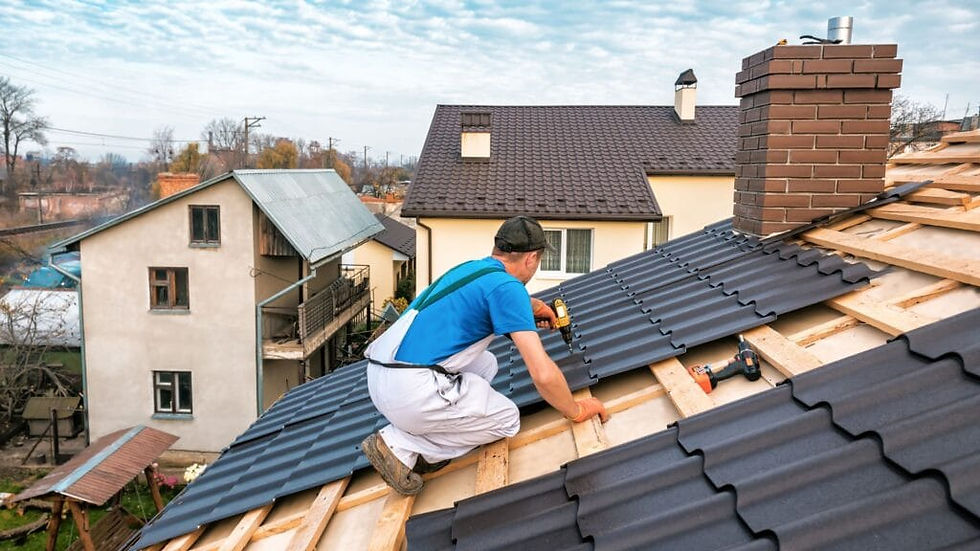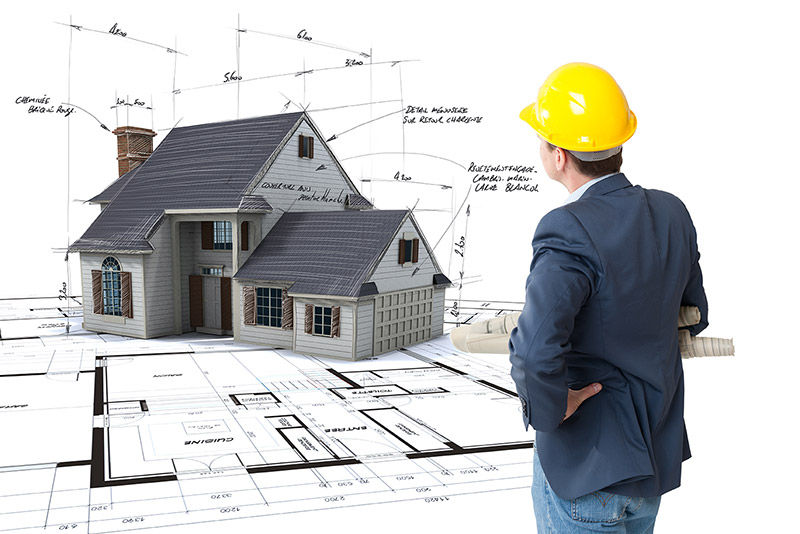Essential Facts About Standing Seam Cladding: Complete Guide
- Anna Wrench
- 3 days ago
- 7 min read
Have you ever wondered why so many modern buildings have smooth, vertical metal lines from ceiling to the ground? Are you curious if the standing seam cladding can change your property while you can save money for a long time? What does this clothing system make popular with architects and builders all over Australia?
Standing seam cladding has become the go-to choose for both residential and commercial properties seeking a perfect blend of durability, style, and performance. This wide guide examines everything you need to know about this innovative clothing system, from understanding the basics to the maintenance and maintenance decisions on maintenance.
Whether you are planning a new construction, considering a renovation, or just want to understand why standing seam cladding clutter has gained such popularity, you will gain practical insight and expert advice in this article.
What Is Standing Seam Cladding?
Understanding the Basics of Standing Seam Systems
Standing seam cladding consists of metal panels that are connected to the surface of the building through the seams that move vertically. These seams lock or overlap, creating a water title barrier as proud of the surface of the panel, and therefore the name is "standing stitch". The system depends on the hidden fasteners, which means that no screws enter the metal surface, which reduces potential leakage points.
Panels usually measure in width between 300 mm and 600 mm and can move continuously from the stage from top to bottom of roof applications or on wall cover. This constant drive ends horizontal joints, provides better weather security than traditional clothing methods.

How Standing Seam Differs from Traditional Cladding Options
Unlike traditional cladding systems, which use exposed fasteners or overlapping sheets, it creates standing seam a smooth, uninterrupted surface. Traditionally corrugated iron or tile system requires hundreds of penetrations, representing a possible error point above each time. Standing seems concealed fixing system clips into place beneath the seams, allowing for thermal movement whilst maintaining weatherproofing.
The aesthetic difference is equally striking. Where the Weatherboard or Brick veneer creates a texture, gives fragmented appearance, the standing seam gives clean, modern lines that complement modern architectural styles. The vertical emphasis can make buildings look long and more elegant, while the diversity of available profiles means that you are not limited to a specific appearance.
Why Choose Standing Seam Cladding for Your Project?
Top Benefits That Make Standing Seam Worth the Investment
Standing seam cladding offers exceptional longevity, often lasting 40-70 years of minimal maintenance. The hidden attachment system means low possibilities for rust and rust, while the ability to adjust thermal expansion and contraction reduces stress -related errors. Many property owners make early investments through low maintenance costs and energy savings.
The installation process requires effective traditions, which usually move faster than traditional clothing methods. Panels can be produced on site or up to an accurate length of the factory, minimize the waste and ensure the correct fit. This efficiency means low labour costs and a short project deadline.
Weather Resistance and Durability in Australian Climates
Australia's various climate zones, from the tropical Queensland to the temperate Tasmania, require the clothing system that can handle extreme conditions. Seam Excel, which is in the coastal environment where salt spray corrodes vulnerable parties to traditional systems. The raised seams throw the water efficiently, while the interlocking design prevents wind -run rain from entering the building envelopes.
In Bushfire-exposed regions, metal-standing seams provide excellent fire resistance, often meets BAL-40 requirements without further treatment. The non-combustible nature of metal panels provides security for homeowners in high-risk areas, while smooth surface prevents Rava Cumulation that can ignite the spot fire.
Energy Efficiency and Thermal Performance
Modern standing seam systems include thermal brakes and can accommodate sufficient insulation by creating very efficient building envelope. The metal surface reflects solar radiation, reducing heat gain in summer, whilst proper insulation prevents heat loss in winter. Some systems achieve thermal resistance values exceeding R2.5 when combined with appropriate insulation materials.
Cool roofing and lighter colors can reduce the surface temperature by 30 ° C compared to dark ceiling materials. This temperature reduction is translated to reduce air conditioning directly and to provide better rest for the construction of living. In commercial applications, these energy savings can be sufficient, often justify initial investments within 5-10 years.
How Much Does Standing Seam Cladding Cost?
Breaking Down the Price Per Square Metre
Standing seam cladding usually costs between $ 50 and $ 150 per square meter for the ingredients alone, depending on the type of metal, thickness and selected finish. Aluminum options usually begin around $ 50-80 per square meter, while premium copper or zinc system can exceed $ 120 per square meter. These prices reflect only physical costs and do not include installation, insulation or additional components.
The installation project adds different $ 40–80 per square meter, depending on complexity, access to the site and regional work frequencies. Simple, rectangular buildings with simpler access costs compared to complex designs with many angles, penetration or difficult location positions. Always flashing, closing and extra cost factor for trim pieces, which can add 15-20% to your content budget.
Installation Costs vs Long-Term Value
While in advance costs more than the cost's vinyl siding or fibre cement, it seems that the service life makes it financially attractive over time. Keep in mind that vinyl clothing can claim compensation after 20-25 years, while the standing seam can last up to 50+ years of proper maintenance. When you are a factor in rebuilding costs for traditional cladding every 7-10. Years, the cost of lifetime is often compared to the seam.
Energy savings contribute significantly to long -term value. A well-adapted standing seam system can reduce heating and cooling costs by 20-40%depending on your climate and existing insulation level. For a specific Australian home that spends $ 2,000 annually on energy, these savings can be a total of $ 20,000-40,000 during the lifetime of the clothing.
What Materials Are Used in Standing Seam Cladding?
Popular Metal Options and Their Characteristics
Aluminum is still the most popular option for housing applications because of its excellent corrosion resistance, light properties and competitive prices. Aluminum alloys in marine quality exceptionally well in the coastal environment, and counteracted salt spray that will quickly reject steel.
Steel, especially colors tape and zinicum products, dominate the commercial market. These products combine strength with cost-effectiveness, offering spans up to 3 metres between supports. Galvanised and painted steel systems provide excellent durability in most Australian conditions, though coastal applications require careful specification of protective coatings.
Coating and Finish Choices
Modern coating technology has revolutionized standing sessions and performances. PVDF coating offers better colors storage and chalk resistance, while maintaining the look for 20-30 years. These fluoropolymer covers oppose the disappearance resistance, ensuring that your building looks healthy decades after its establishment.
The powder coating provides a cost -effective alternative with good durability and a wide colors series. Below does not match PVDF's life, quality powder strokes still provide 15-20 years of service in most environments. Matt Finnish has recently gained popularity, reduced blending and providing sophisticated architectural statements.

How Long Does Standing Seam Cladding Last?
Expected Lifespan by Material Type
Suitably installed aluminum standing seam cladding usually lasts 40-50 years, some systems occur under favorable conditions over 60 years. The natural oxide layer of the material provides underlying corrosion protection, while modern coatings further lead to life. Regular maintenance can add decades during the functional life of the system.
Steel systems provide similar lifetime when preserved correctly, where colors chart extend to 36 years in a severe marine environment. Zinc and copper systems regularly work perfectly after a century of service with several European examples, over 70 years. This premium content is improved with age as their protective patina develops.
Maintenance Requirements for Maximum Longevity
Annual inspections help identify potential problems before they become expensive problems. Check for loose clips, damaged seams or accumulated debris that can cause water pond. Most maintenance involves easy cleaning with water and light washing agents to remove dirt and prevent coating.
The touch painting deals with smaller scratches before the war begins; while checking and replacing sealant every 10-15 years prevents water infiltration. These simple maintenance features, which usually cost less than $ 500 annually for an average home, can expand the system's lifetime for decades.
Environmental Impact and Sustainability
Recyclability and Eco-Friendly Credentials
Metal standing seam cladding claims impressive environmental information, leading to infinitely recycled without loss of aluminum and steel quality. At the end of life, panels can be fully recycled, the demand for landfill and raw materials can be reduced. The recycling process uses much less energy than primary production, one of the most durable design materials metal claddings.
Production reforms have reduced the environmental impact of production, and are now using renewable energy with many suppliers and implementation of zero-illiterate policy. Local production in Australia reduces transport emissions compared to imported alternatives, supports both environment and economic stability.
Solar Integration and Green Building Standards
Standing seam roofs provide ideal platforms for solar panel installation without penetrating the weather barrier. Specialised clamps attach to seams, maintaining warranty coverage whilst supporting photovoltaic arrays. This integration capacity makes zero energy particularly attractive for standing seams for buildings.
This system contributes with valuable points against green stars and Naber's rankings through energy efficiency, recycling and durability criteria. Cool roof options can help achieve goals for the lack of heat Island in urban development, while long life for standing seams reduces life cycle environmental effects compared to small alternative alternatives.
Making Your Final Decision
Standing seam cladding represents an important investment in the future of your property, offering unmatched durability, energy efficiency and aesthetic appeal. The high starting costs for the system are offset by minimal maintenance requirements, extraordinary long life and potential energy savings that have accumulated for decades.
While making a final decision, consider your specific circumstances. Coastal properties benefit greatly from the corrosion resistance of the seam, while in Bushfire areas they appreciate fire -resistant properties. If you are planning to stay in your property for a long time, investment creates excellent financial significance.




Comments